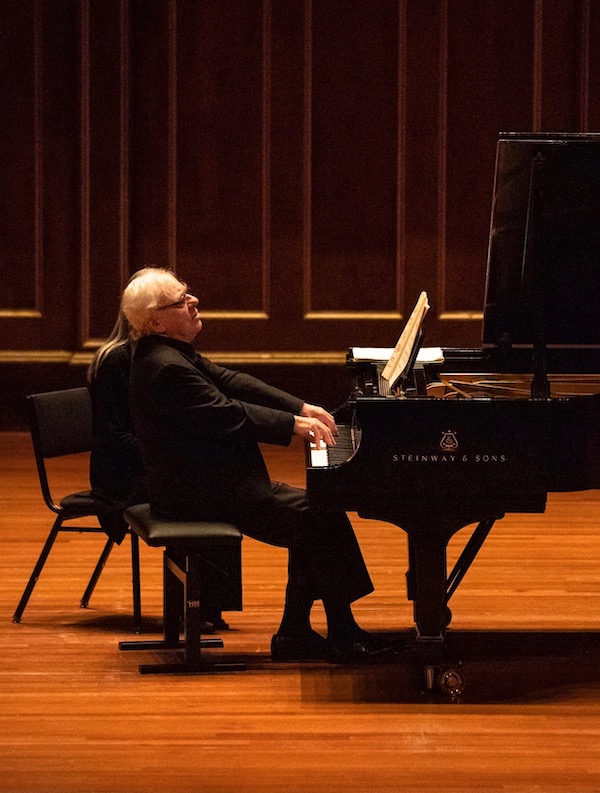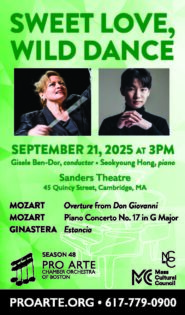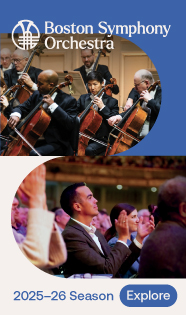Goode explores subtle degrees in probing Celebrity Series recital

At 76, Richard Goode may lack the crisp technique he possessed in earlier years. Yet the pianist continues to deliver insightful performances of a wide variety of repertoire.
In his Celebrity Series recital at Jordan Hall on Saturday night, Goode offered works by Debussy, Chopin, Janáček, and Bach. The greatest strength of Goode’s performances continues to be his ability to render music with understated drama. Passages where other pianists may employ a forceful approach come off with an attractive subtlety in Goode’s hands—the music is weighty in its own right without being overblown. Playing Saturday evening, he delivered readings that revealed the grand structures and colors of each selection.
His performances of various Debussy works were the evening’s highlight. In Book 2 of Images, Goode rendered each passage with a graceful touch. “Cloches à travers les feuilles” showed him in delicate upward melodic sweeps. The flourishes that move through “Et la lune descend sur le temple qui fut” and the undulating figures of “Poissons d’or” flowed gently. Throughout, Goode’s performance reveled in the music’s static qualities—his Debussy coming off effectively as motion without change.
A selection from the composer’s Etudes showcased Goode in more daring technical feats. The blazing runs of “Pour les octaves” felt labored at first, but as Goode’s reading progressed the figures took on crispness and urgency. The arpeggios of “Pour les sonorities opposées” moved searchingly, and Goode found the humor in the polka rhythms of “Pour les arpèges composes.”
Goode treated “La soirée dans Grenade”from Estampes and L’isle joyeuse less as showpiecesthan as avenues in which to explore the varieties of Debussy’s sonic palette. Shaped elegantly, the former work had depth and dimension as Goode maneuvered between his robust and pearly keyboard tone. His left-hand figures in L’isle joyeuse took on appropriate darkness, and he played the bright chords at work’s climax with a surprising delicacy, the figures chiming like distant bells.
His selection of Chopin mazurkas took on greater zeal. The Mazurka in C major, Op. 56, No. 2 had a sure-footed swagger; yet the style was characteristically idiomatic, complete with melodic arabesques and generous rubato. In contrast, Goode’s reading of three Op. 59 Mazurkas flowered with operatic lyricism as the lines rose, coiled into soft patterns, and fell away.
Less successful was Goode’s reading of Janáček’s In the Mists, which requires more forceful playing to pull off convincingly. While Goode tossed off the cascading runs of the first movement with aplomb, the passages of the final Presto could have used greater power and definition. Yet there were things to like in this performance. The lines of the Molto Adagio and Andantino had a soft, almost Debussyian glow, Janáček’s harmonies seeming to waft in the air like perfume.
Bach’s Partita No. 5, which opened the recital, brought both poise and vitality.
Using the pedal generously, Goode wove the scales of the Preambulum into a sumptuous tapestry of sound. His finger technique wasn’t always crisp, yet Goode managed to mine the terpsichorean flair from the remaining movements without sacrificing the vocal shapes of Bach’s writing. The Allemande lilted in its wide dynamic shaping; the Courante bounded congenially. The fragmented phrases and harmonies of the Sarabande seemed to flicker like faint light, while the fugal lines of the Gigue—here rendered crisply—had the immediacy of friendly conversation. As displayed in this recital, Goode’s performances remain expressions of utmost sensitivity.
For encores, Goode offered tender readings of Schubert’s Moment Musicaux No. 3 and Brahms’s Intermezzo, Op. 117, No. 1.
The Celebrity Series will present the Chamber Music Society of Lincoln Center in music by Beethoven, Brahms, and Dohnányi 3 p.m. November 17 at Jordan Hall. celebrityseries.org; 617- 482-6661
Posted in Performances

